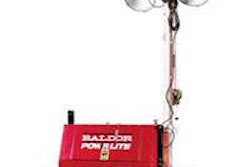It’s a done deal.
President Obama has signed a nearly trillion dollar stimulus package ($838 billion to be exact) yesterday in hopes to dig our nation out of a deep recession.
Whether you think the package was a bad idea — that Obama should have stuck with tax cuts instead of adding to the national deficit — or think the American Economic Recovery and Reinvestment is the only way to help America with the dire financial situation, there’s one thing for certain: the construction industry is going to get a big boost.
The economic stimulus and recovery package will undoubtedly put the construction industry back to work and provide much-needed jobs. And there’s certainly no question whether it the industry will be able to accommodate the anticipated spike in work as the number of laid-off workers continues to climb.
In the final package the House and the Senate agreed on Feb. 13, $48 billion was provided for infrastructure investment. And surprisingly, high-speed rail was a major beneficiary. The House hadn’t allocated anything for high-speed rail, and the Senate’s package only included $2 billion for it. But it came out as the big winner with $8 billion, considering it was given four times the original suggested investment.
“It’s important to understand where we started from to understand the significant boost,” said Dave Bauer, senior vice president of governmental affairs for the American Road and Transportation Builders Association (ARTBA), in a special call to its members about the final economic stimulus package. Better Roads, a sister publication to Equipment World, participated in the call.
The House package included nothing for high-speed rail, and the Senate provided $2 billion. The conference package “increased it dramatically” to $8 billion, Bauer pointed out.
“Now that so much has been allocated to high-speed rail from the general fund, we should look at this as positive,” Bauer said. “[We] will design and build the system.”
Congress has been diligently working to find a way to fund a national high-speed rail network, and the $8 billion “will certainly set this in motion,” he said. “The fact that this was addressed now is a good thing. There were communities actively working against including highway investment in this. They wanted to include requirements that couldn’t be used for any capacity-related projects.
“Now that so much has been allocated to high-speed rail from the general fund, we should look at this as positive,” Bauer added. “[We] will design and build the system.”
Congress has been diligently working to find a way to fund a national high-speed rail network, and the $8 billion “will certainly set this in motion,” he said. “The fact that this was addressed now is a good thing. There were communities actively working against including highway investment in this. They wanted to include requirements that couldn’t be used for any capacity-related projects.”
In the final economic recovery package measure, $27.5 billion is dedicated for highway activities, but there are many sub-allocations as part of the allotment so the highway and bridge construction market won’t see all of this money for infrastructure investment.
Essentially, the $27.5 billion is a pot of money that can be used for an array of highway-related activities. The breakdown of how the money is sub-allocated in this mode is as follows:
- $840 million for administrative and operational set-asides.
- The remaining $26.6 billion must be apportioned within 21 days to the states via a hybrid formula — half the Surface Transportation Program formula and half SAFETEA-LU 2008 highway program formula.
- $799.8 million (3 percent) of this money must be immediately set aside for the Transportation Enhancement Program.
- Of the remaining $25.86 billion, $18.10 billion (70 percent) is under state control and $7.76 billion (30 percent) under local government control.
A breakdown for how money is being allocated in each sector of infrastructure is as follows:
Infrastructure Investment at a Glance:
- Highways: $27.5 billion total. The breakdown:
- $840 million for administrative and operational set-asides; remaining $26.6 billion to be apportioned within 21 days to states; $798.8 million immediate set-aside (3 percent) for Transportation Enhancement Program. Of the remaining $25.86 billion, $18.10 billion (70 percent) under state control and $7.78 billion (30 percent) under local government control.
- Passenger Rail: $8 billion for high-speed rail. Broken down to $850 million for Amtrak capital grants and $450 million for Amtrak security grants.
- Public transportation: $8.4 billion total. Broken down:
- $6.9 billion for formula capital grants; $750 million for fixed guideway modernization; and $750 million for light-rail and commuter-rail projects.
- Discretionary Surface Transportation Program: $1.5 billion to fund large transportation projects costing between $20 million and $300 million.
- Aviation System: $1.3 billion total. Broken down: $1.1 billion for Airport Improvement Program activities; $200 million for facilities and equipment program.
For a more detailed breakdown from the American Road & Transportation Builders Association, including the breakdown of how the money will be sub-allocated in these sectors and any “use it or lose it” and accountability stipulations, click here.
Here are some other useful documents:
- For the Committee on Transportation and Infrastructure Provisions Conference Report on H.R. 1, click here.
- For a stimulus infrastructure investment chart from the Associated General Contractors of America, click here.
- For a state-by-state breakdown from the Transportation & Infrastructure Committee Investment Formula Funding for H.R. 1, click here.
For more on the ARTBA conference call and more analysis, see the “Financial District” and “RoadWorks” sections of the March 2009 print edition of Better Roads when it comes out next month.











